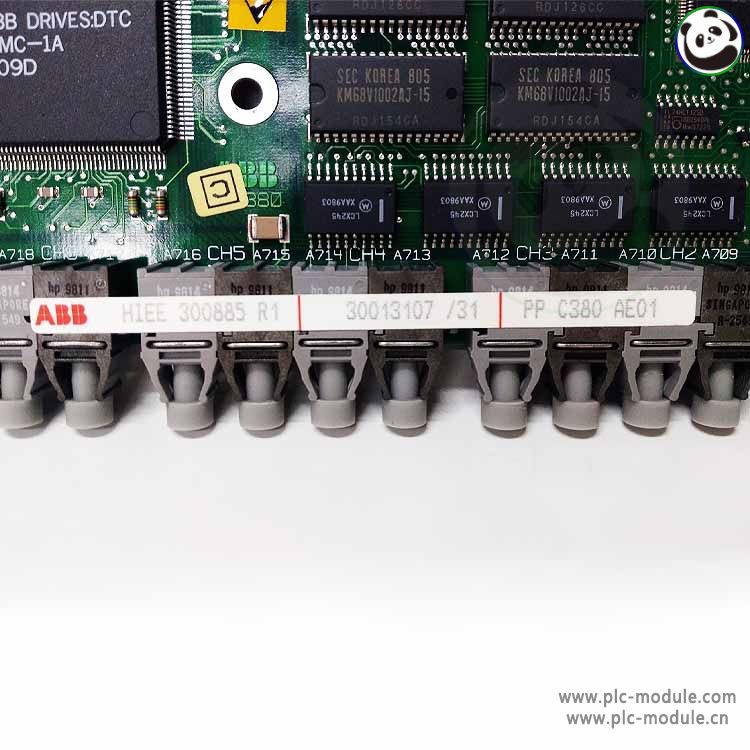.Many products are not yet on the shelves please contact us for more products
.If there is any inconsistency between the product model and the picture on display, the model shall prevail. Contact us for the specific product picture, and we will arrange to take photos in the warehouse for confirmation
.We have 16 shared warehouses around the world, so please understand that it can sometimes take several hours to accurately return to you. Of course, we will respond to your concerns as soon as possible
The ABB PPC380AE01 HIEE300885R1 excitation interface board is primarily responsible for managing the excitation of electrical machines such as generators or motors.
Excitation Control: It controls the amount of current or voltage supplied to the field winding of the machine. For example, in a synchronous generator, the excitation current determines the voltage output. By adjusting the excitation, the board can regulate the generated voltage to match the requirements of the electrical grid or the connected load. In a motor, it can affect the motor's torque-speed characteristics.

Technical Specifications
- Input Signals:
- Voltage Inputs: It can handle a range of input voltages, typically from a few volts to several hundred volts depending on the application. For example, in a power generation application, it might accept the generator's terminal voltage as an input, which could range from 400V to 10kV (after appropriate voltage dividers and signal conditioning).
- Current Inputs: The board is designed to accept current signals, often through current transformers. The input current range can vary, but it's usually in the milliampere to ampere range. These current signals are used to monitor the load current of the machine and adjust the excitation accordingly.
- Speed Signals: In the case of a motor or a generator - motor set, it may receive speed signals. These can come from a tachometer or an encoder. The input speed signal frequency can range from a few hertz (for very low - speed machines) to several kilohertz (for high - speed motors).
- Output Signals:
- Excitation Voltage/Current Outputs: The board provides output signals to control the excitation of the machine. The output excitation voltage can range from a few volts to several hundred volts, and the output current can range from a few milliamperes to tens of amperes, depending on the machine's excitation requirements.
- Power Supply Requirements:
- It usually requires a stable DC power supply. The voltage of the power supply can range from 24V to 220V DC, depending on the design and the application. The power consumption of the board depends on the number of signals it's processing and the power of the output excitation signals.
- Industrial Motor Control:
- In industrial settings, it's used to control the excitation of large motors such as those used in mining equipment, conveyor systems, and industrial pumps. By controlling the excitation, the performance of the motor can be optimized for different load conditions. For example, in a variable - speed drive application, the excitation interface board can adjust the motor's excitation to improve the motor's efficiency and torque - speed characteristics.
- Renewable Energy Systems:
- In wind turbines and solar - powered generators, the excitation interface board can play a role in controlling the output of the generators. In a wind turbine, it helps to adjust the excitation of the generator to match the variable wind speed and maintain a stable output voltage to the grid.
CUSTOMERS WHO PURCHASED THIS PRODUCT ALSO VIEWED THESE PRODUCTS: